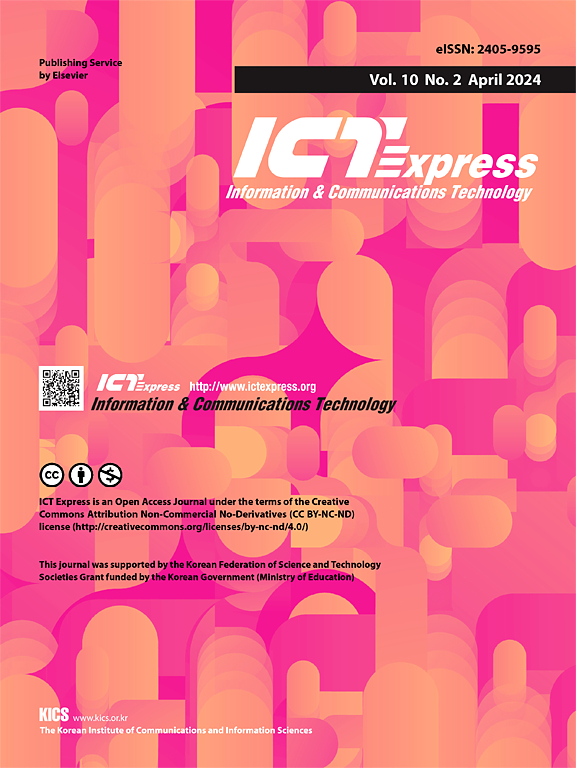Handover strategy for LEO satellite communication using graph neural network
IF 4.2
3区 计算机科学
Q1 COMPUTER SCIENCE, INFORMATION SYSTEMS
引用次数: 0
Abstract
Distributed handover (HO) strategy with low complexity can provide seamless communication in low earth orbit (LEO) satellite networks. However, it is difficult to consider load balancing in distributed HO strategy, which may results in HO failures. In this paper, we propose a graph neural network (GNN) based distributed HO strategy for LEO satellite communication to maximize sum rate by considering load balancing. We first propose target satellite selection method with GNN where each user equipment (UE) selects target satellite and requests HO to it. We then employ ACK decision policy to strictly satisfy load balancing of satellites where each satellite decides HO requests from UEs depending on its load condition. To validate the proposed GNN based HO, we use the System Tool Kit (STK) for modeling LEO satellites with 22 orbits and 72 satellites are in each orbit, and evaluate the HO process during 2400 s. From this constellation, we generate 9,600 samples by randomly deploying UEs on the ground and use them as dataset. Simulation results show that the proposed GNN based HO strategy outperforms conventional HO strategies by selecting an appropriate target satellite. We also demonstrate that load balancing is satisfied due to ACK decision policy and the scalability of proposed GNN architecture is ensured with different network sizes.
基于图神经网络的低轨道卫星通信切换策略
分布式切换(HO)策略具有较低的复杂度,可以为低地球轨道卫星网络提供无缝通信。然而,分布式HO策略很难考虑负载均衡问题,容易导致HO失效。本文提出了一种基于图神经网络(GNN)的低轨道卫星通信分布式HO策略,在考虑负载均衡的基础上实现和速率最大化。首先提出了一种基于GNN的目标卫星选择方法,即每个用户设备(UE)选择目标卫星并向其请求HO。然后采用ACK决策策略严格满足卫星的负载均衡,每个卫星根据其负载情况决定来自ue的HO请求。为了验证所提出的基于GNN的HO,我们使用系统工具包(System Tool Kit, STK)对22个轨道、每个轨道72颗卫星的LEO卫星进行建模,并对2400 s的HO过程进行了评估。从这个星座中,我们通过在地面上随机部署ue来生成9600个样本,并将它们用作数据集。仿真结果表明,通过选择合适的目标卫星,所提出的基于GNN的HO策略优于传统的HO策略。我们还证明了ACK决策策略能够满足负载均衡,并保证了所提出的GNN架构在不同网络规模下的可扩展性。
本文章由计算机程序翻译,如有差异,请以英文原文为准。
求助全文
约1分钟内获得全文
求助全文
来源期刊

ICT Express
Multiple-
CiteScore
10.20
自引率
1.90%
发文量
167
审稿时长
35 weeks
期刊介绍:
The ICT Express journal published by the Korean Institute of Communications and Information Sciences (KICS) is an international, peer-reviewed research publication covering all aspects of information and communication technology. The journal aims to publish research that helps advance the theoretical and practical understanding of ICT convergence, platform technologies, communication networks, and device technologies. The technology advancement in information and communication technology (ICT) sector enables portable devices to be always connected while supporting high data rate, resulting in the recent popularity of smartphones that have a considerable impact in economic and social development.
 求助内容:
求助内容: 应助结果提醒方式:
应助结果提醒方式:


